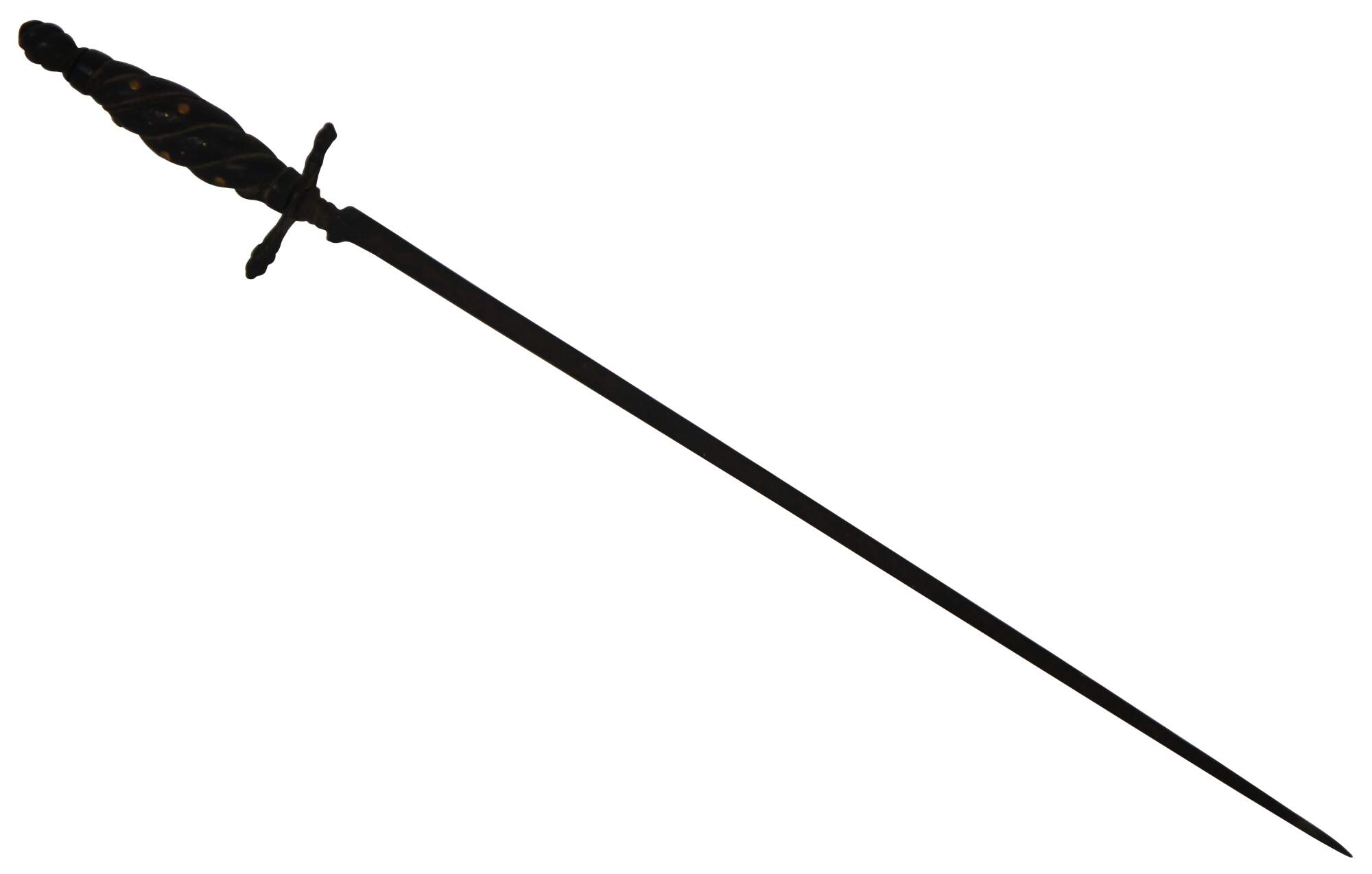
Shipping:
Free Shipping Included
Delivery:
Estimated 2-15 Business Days
Payments:
Credit Card, Check, Cash, PayPal, Apple Pay, Venmo
Returns:
30 Days 100% Money Back Guarantee, Buyer Pays Return Shipping
Description
Antique 17th century Italian gunner’s stiletto featuring a triangular blade marked with incremented markings for measuring cannon bores / powder levels. Turned iron pommel, bolster, and cross guard, flanking a wooden grips, decorated with grooves once sporting wire inlays and accented with round amber beads.
Particularly suited for thrusting, was often a gunner's last line of defense after the cannon and other arms available to the gun crew had been used. The triangular blades were often engraved with graduated markings and numbers. These divisions gave the gunner a means of measuring a gun bore and calibre of the ball, the ability to calculate distances, among other tasks.
“First developed in Italy, the stiletto dates from the late 1400s, and is thought to be a development of the rondel dagger or misericordia, a needle-pointed weapon with a narrow blade designed primarily for thrusting, though possessing cutting edges.[6][7] Early stilettos normally used a one-piece cast-metal handle which was shaped and turned on a lathe. The stiletto blade was usually hammer-forged into a dense rod with a narrow, triangular cross section, without any sharpened edges. However, other examples of the period have emerged bearing round, square, or diamond cross sections. The Italian word ""stiletto"" comes from the Latin stilus,[8] the thin pointed Roman writing instrument used to engrave wax or clay tablets in ancient times. The stiletto began to gain fame during the late Middle Ages, when it was the secondary weapon of knights.[9] Originally designed as a purely offensive weapon, the stiletto was used to finish off a fallen or severely wounded heavily armored opponent. The needle-like blade could easily penetrate most mail or find its way through gaps in a knight's plate armor, and was narrow enough to pass through the eye slits of the helmeted knight. A severely wounded opponent, who was not expected to survive, would be given a ""mercy strike"" (French coup de grâce), hence the name miséricorde. Later the Gunner's Stiletto became a tool for clearing cannon-fuse touch holes; used in the manner of an automotive oil dipstick, they were often inscribed with marks indicating levels of powder charges for ranging distance.”
Condition
Good Antique Condition - Some light surface rust; stains in grooves/some missing wire inlay; cross guard slightly loose; some missing decorative beads
Dimensions
22.25” x 2.75” x 1” / Blade Length – 17” (Length x Width x Depth)
You May Also Like